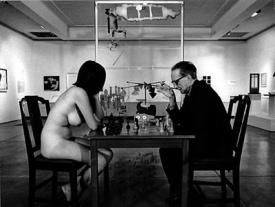
It’s a rare thing that I read a Doc Searls post and start shaking my head half way through. The recent $100 million investment in Twitter, bringing their valuation to $1 billion, has unleashed a torrent of criticism. Driving my daughter to school the other day, I heard an “analyst” on NPR chirp that Twitter couldn’t be worth $1 billion because it was just a fad, that people might stop using it tomorrow and the bottom would fall out. If using Twitter were a random activity that returned no value, I suppose that could be true. Just as people could decide to stop going to the movies, stop eating pizza or stop listening to “analysts” on NPR. If the value of something is disregarded at the start, it’s rather difficult to speak sincerely of valuation.

Searls’s criticism is a reprise of the open source silo meme. The drumbeat for the nationalization of Twitter has re-emerged. The capitalist pigs at Twitter have chosen to build a business rather than contribute their technology to the open source technology commons. Praise is sung for linux, rss, email and http. If only Twitter would see the light and release what they have to benefit the common good. Twitter’s business is just lumber from which other software developers should be allowed to create value. The complaint is that because Twitter is neither open nor decentralized, it has created an intractable engineering problem and does not contribute to the greater good of the web.
I would contend that Twitter is both open and distributed. Its characterization as a silo misses the point. Rather than using the silo as a criteria for openness, what if we look instead to the pipe. In the Unix command line, the standard output can be piped to the standard input of a new filter. Some very complex forms of processing can be created by chaining together a series of filters and piping data through it. The “chainability” of the javascript library Jquery is another good example of this model. The critique of the silo is its lack of interoperability, you can’t pipe to or from it.

Now, let’s look at Twitter. Can you pipe messages to Twitter? Can you pipe messages from Twitter? There was a time when I used Identi.ca as a primary micromessaging client. I typed messages into the Identi.ca web client and they entered the local pool, then I piped them to FriendFeed, where they also entered that ecosystem, FriendFeed sent them to Twitter, and Twitter sent them to Facebook. Examining this relay chain could you say that Twitter is a silo that owns my messages? Each of these venues represents a slightly different social graph and has a different tool set with which to display, prioritize and filter my messages within the context of the local graph. Twitter and Facebook are simply the most successful venues with which to read and write micro-messages (formerly called status messages). Google reader shares, SMS messages, Blog entries, et cetera can all be piped in and out of Twitter. Or if one prefers, Twitter can be left out of the chain entirely.
The mind share that Twitter and Facebook have built can’t be nationalized and distributed as lumber for a hypothetical socialist realist distributed micro-messaging ecosystem. If one is truly interested in open, look to the pipe, not the silo. Certainly there’s work that needs to be done on the pipe itself. Issues around real time, rate limiting, identity, social graphs, micro-communities, activity stream formats and track are all very important. But the real time stream environment is already here and operational. Many in the open source crowd are just rewinding the VCR and replaying the last battle. Steve Ballmer summed it up nicely in his interview with Mike Arrington, “we want to be first, best and interoperable.” Even Microsoft has embraced the pipe.
14 Comments
